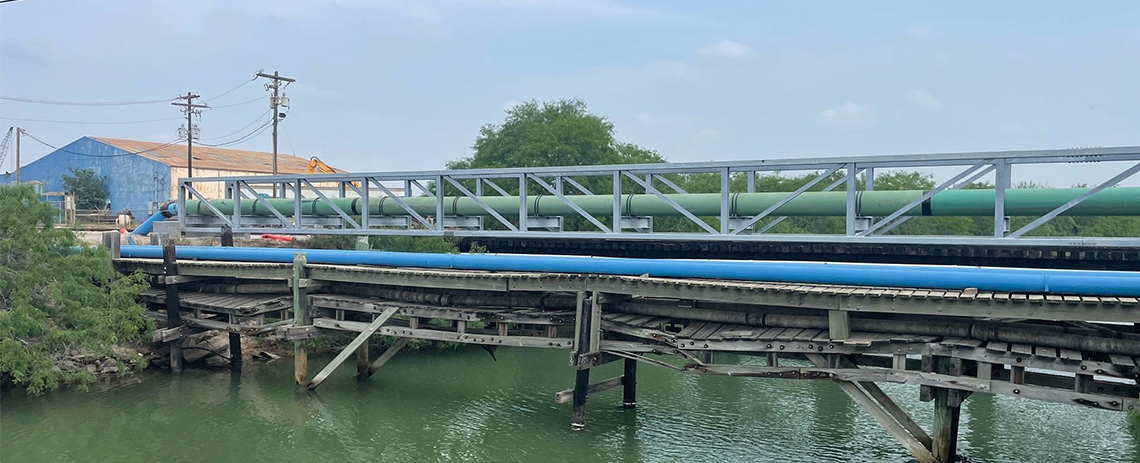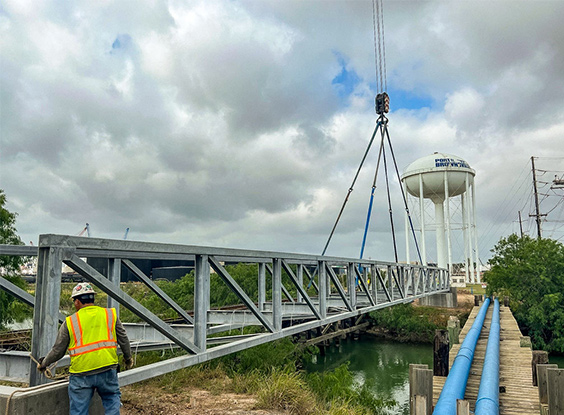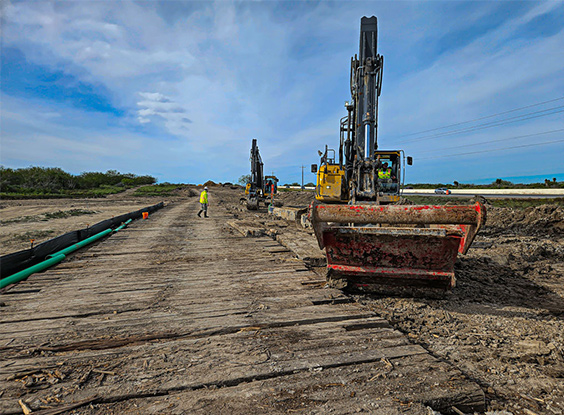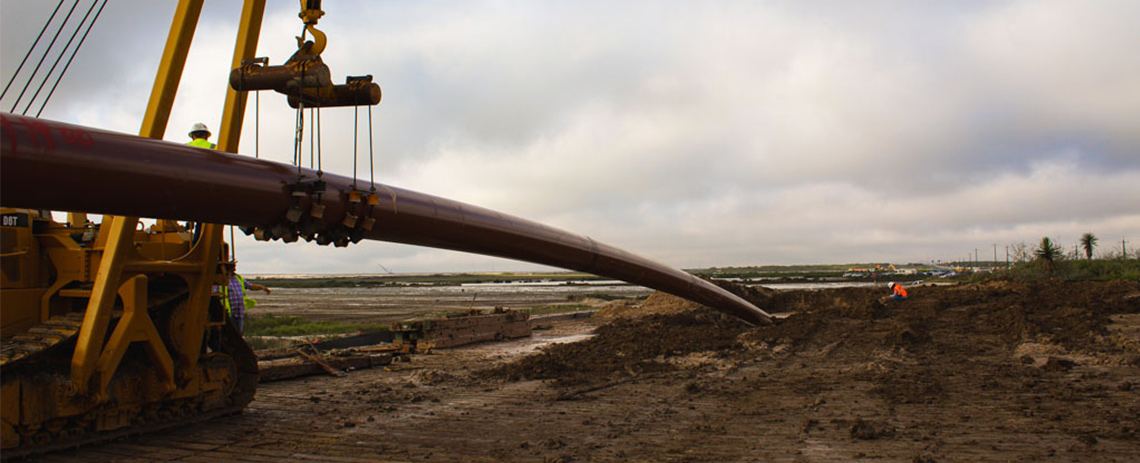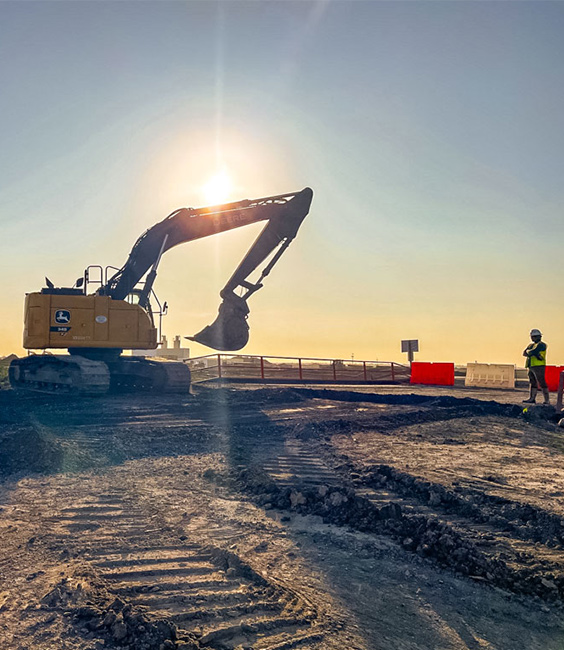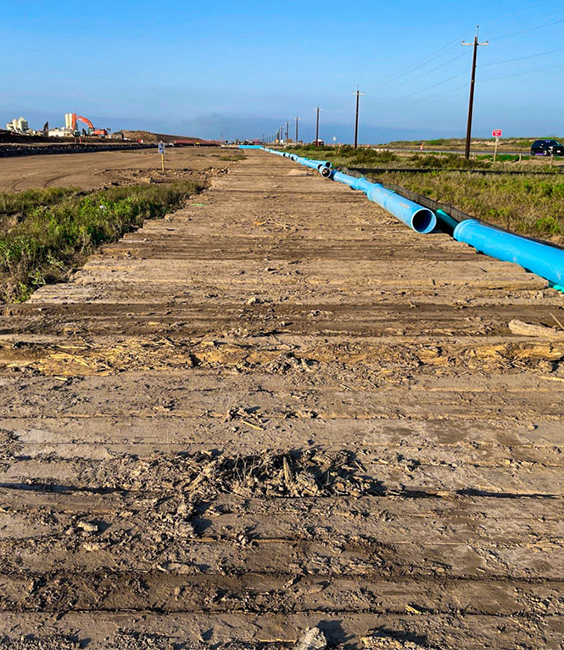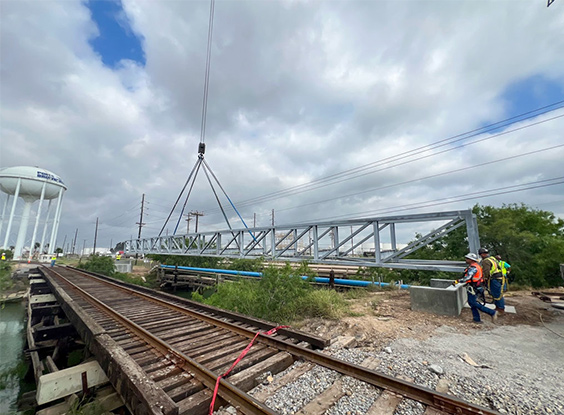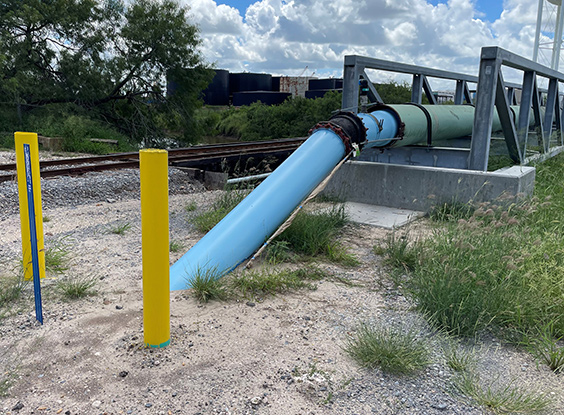Rio Grande LNG-Brownsville Utilities Project - 16" Waterline and 6" Sanitary Force Main
Location
Brownsville, TXDelivery Method
- Design-Build
Client Type
IndustrialProject Type
- Pipeline
NextDecade needed a reliable water and sewer system to support the Rio Grande LNG (RGLNG) project, a natural gas liquefaction and export facility along the Brownsville Ship Channel in Brownsville, Texas. Located over 10 miles from existing utility networks, establishing this infrastructure was crucial for efficient operations. As the design-builder, Garney managed the engineering, procurement, and construction of the facility’s water and sewer systems, which involved upgrading a key section of the Port of Brownsville waterline and extending potable water and sanitary sewer services.
Garney installed 48,400 linear feet (LF) of 16-inch polyvinyl chloride (PVC) waterline and 38,100 LF of 6-inch PVC force main along the Brownsville Navigational District (BND) utility corridor on State Highway 48. This work required navigating two waterways, requiring horizontal directional drilling (HDD) to install the pipe beneath the San Martin Channel and the Bahia Grande Channel. To complete a 140’ channel crossing at the Port of Brownsville, Garney constructed a prefabricated steel pipe bridge supported by several 120-foot drilled concrete piers and cast-in-place concrete foundation abutments. With foundations completed, the team set the bridge in place, secured the steel casing, and installed the waterline.
Heavy rainfall during the first few months of construction led to flooding in many areas of the project site, prompting the team to adjust their pipeline installation approach. To maintain access for heavy equipment on the wet soil, they placed 6,500 crane mats throughout the site. After further geotechnical evaluation, Garney found that around 3,800 LF of pipeline could not be installed using traditional open-cut methods due to the wet conditions. To address this, they used special joint restraints to ensure the pipe and joints remained secure in the soil.
Collaboration was key to delivering this project successfully. By working closely with the owner and the engineer throughout each phase, the team delivered the project ahead of schedule and met the water delivery obligation to RGLNG’s facility contractor.
